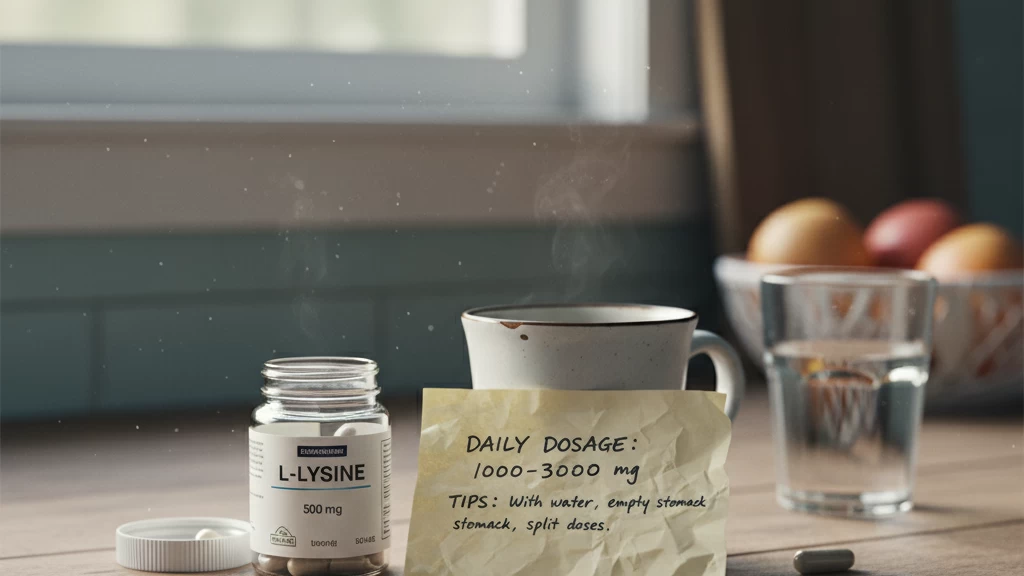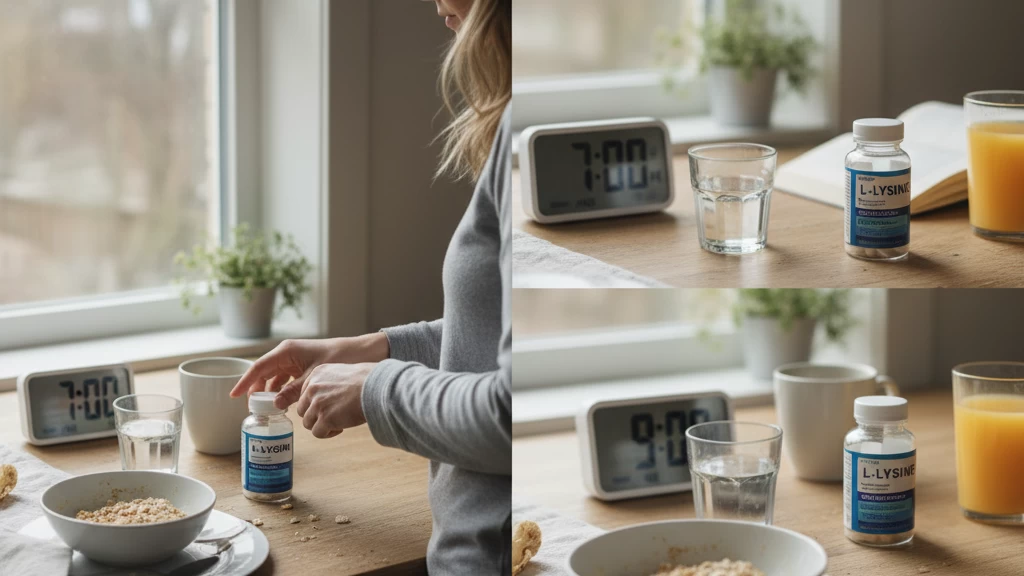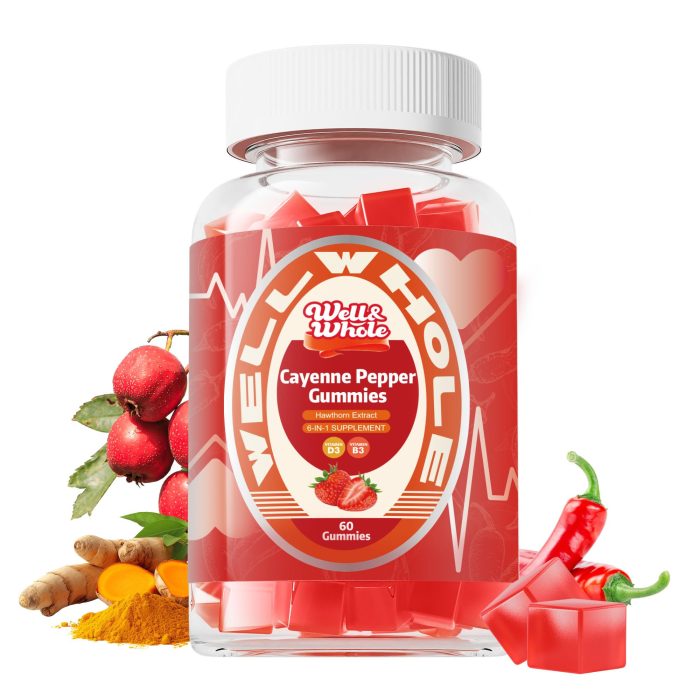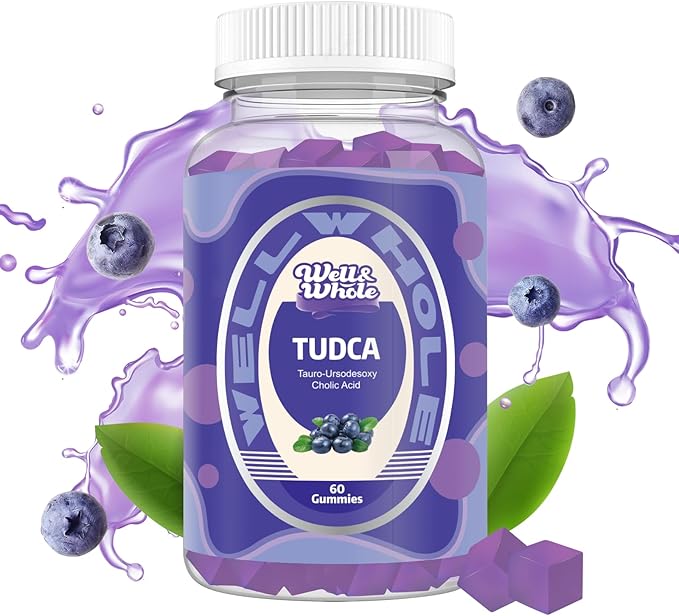The Science Behind L-Lysine: Core Functions and Evidence-Based Benefits
L-lysine is an essential amino acid, which means your body can’t make it on its own—you need to get it through food or supplements. But why is lysine so important? It plays a vital role in protein synthesis, helping build muscle, repair tissues, and produce enzymes and hormones. Simply put, lysine is a building block for your body’s growth and maintenance.
Wondering about its plus side beyond muscle health? Research shows lysine benefits for cold sores by blocking the replication of the herpes simplex virus, making it a popular choice for preventing outbreaks. Plus, lysine supports the immune system, aids calcium absorption for bone health, and even helps with stress by contributing to neurotransmitter production.
In short, l-lysine goes beyond just being a protein piece—it’s a multitasker contributing to overall wellness, immune defense, and recovery. Understanding these scientific facts can empower you to make smart choices about your daily lysine intake recommendations.
Recommended Daily L-Lysine Dosage: Baseline Needs and Condition-Specific Guidelines
For most healthy adults, the baseline daily lysine intake ranges from 800 mg to 1,000 mg to support normal body functions such as protein synthesis and muscle repair. This amount covers general nutritional needs and helps maintain adequate amino acid levels.
However, certain conditions call for higher doses of L-lysine. For example:
- Cold sore prevention and treatment: Clinical studies suggest taking 1,000 mg to 3,000 mg per day can reduce outbreaks and speed healing.
- Herpes management: Similar doses between 1,000 mg and 3,000 mg daily are often recommended to reduce the frequency and severity of flare-ups.
- Muscle recovery and stress reduction: Athletes or those under physical stress might benefit from increased intake, sometimes up to 3,000 mg per day, to support recovery and immune function.
It’s important to tailor your lysine dosage based on your personal health goals and consult a healthcare provider for guidance, especially if you have specific conditions. Starting with a low dose and adjusting as needed is a smart way to ensure safety and effectiveness.
For an easy way to boost your daily lysine along with other immune supports, consider combining it with well-balanced options like vitamin C and zinc gummies. These combinations can promote overall wellness and help you stay on track. Check out well-crafted immune support formulas for more details.
Recommended Daily L-Lysine Dosage: Maximum Safe Limits and Factors Influencing Dosage
When it comes to L-lysine dosage, more isn’t always better. The generally recognized safe limit for adults is around 3,000 mg (3 grams) per day. Taking more than this doesn’t usually offer added benefits and could increase the risk of side effects like stomach pain or diarrhea. For most people, sticking to doses under this threshold is wise.
Several factors influence how much L-lysine you might need or tolerate:
- Age and health status: Older adults or those with kidney issues may require lower doses.
- Purpose of use: For managing cold sores or herpes prevention, doses often range between 1,000 to 3,000 mg daily depending on severity.
- Dietary intake: If you already consume lysine-rich foods, you might need less from supplements.
- Form of supplement: Lysine gummies or capsules can have different absorption rates.
If you’re considering higher doses or combining L-lysine with other essential amino acid supplements, it’s smart to consult a healthcare pro first. Integrating L-lysine smartly, alongside tips from experts on choosing the right supplement, helps you stay safe and effective.
Best Ways to Get Your Daily L-Lysine: Top Food Sources and Pros/Cons Comparison

Getting your daily L-lysine naturally is simple if you know which foods pack the most punch. High-lysine foods mostly come from animal sources like meat, poultry, fish, and dairy. For example, chicken breast, lean beef, eggs, and Greek yogurt are all rich in L-lysine. Plant-based options, such as lentils, chickpeas, quinoa, pumpkin seeds, and soy products, provide lysine too, but generally in lower amounts.
Here’s a quick breakdown:
| Food Source | Lysine Content (mg per 100g) | Pros | Cons |
|---|---|---|---|
| Chicken breast | ~2,750 mg | High bioavailability, versatile | Not vegan/vegetarian |
| Lean beef | ~2,400 mg | Rich in protein and lysine | Higher in saturated fats |
| Eggs | ~900 mg | Easily digestible, affordable | Allergies possible |
| Greek yogurt | ~1,200 mg | Probiotics + lysine | Dairy intolerance for some |
| Lentils | ~660 mg | Plant-based, fiber-rich | Lower lysine density |
| Pumpkin seeds | ~600 mg | Healthy fats + lysine | Calorie-dense, portion control |
| Quinoa | ~550 mg | Complete plant protein | Slightly more expensive |
Pros of Food Sources:
- Whole foods come with extra nutrients like vitamins, minerals, and fiber.
- Generally safer with minimal risk of overdose.
- Easy to include in regular meals.
Cons of Food Sources:
- May require larger portions to meet high lysine needs.
- Plant-based sources often have lower lysine bioavailability.
- People with dietary restrictions might struggle to get enough lysine solely from food.
For those who want a straightforward boost or have specific needs, lysine supplements like lysine gummies offer a handy alternative. You can check out detailed guidance on the suitability and usage of lysine supplements for daily wellness here.
Balancing food sources with supplements can help you hit your daily lysine intake without stress, especially if you’re focusing on benefits like cold sore prevention or muscle recovery.
Best Ways to Get Your Daily L-Lysine: Supplement Spotlight and Integration Tips

When it comes to boosting your daily L-lysine intake, supplements like L-lysine gummies and capsules offer a convenient, reliable option—especially if your diet falls short on lysine-rich foods. These supplements are popular for supporting Immune Health and are often used for lysine benefits in cold sores prevention and muscle recovery.
Here are some quick tips to integrate L-lysine supplements into your routine:
- Start with a moderate dose: Typical supplements range from 500 mg to 1,000 mg per serving. This helps meet your daily lysine needs without going overboard.
- Consistency is key: Take your L-lysine supplement at the same time each day to build a steady level in your system.
- Pair with meals: Taking lysine with food can improve absorption and reduce any stomach discomfort.
- Combine with vitamin C: Some studies suggest that vitamin C may enhance the antiviral effects of lysine, making this a smart pairing for cold sore prevention.
For those interested in a deeper dive on how L-lysine supports overall health, check out this detailed guide on the benefits and usage of L-lysine in daily health routines.
Supplements are a straightforward way to fill gaps in your diet, but always keep your total daily lysine intake in mind and adjust as needed for your specific goals or conditions.
Timing and Tips for Maximum Absorption and Results: Optimal Timing and Stacking Strategies

To get the most out of your l-lysine supplements, timing matters. It’s best to take lysine on an empty stomach—about 30 minutes before a meal or two hours after eating—to boost absorption. Food, especially high in other amino acids, can compete and reduce how well your body takes in lysine.
Here are some quick tips for stacking and timing:
- Take lysine with vitamin C: It may enhance immune support and cold sore prevention.
- Avoid taking lysine with high-arginine foods or supplements in the same dose, as arginine can counteract lysine’s benefits, especially for herpes management.
- Split your dose into two or three smaller servings throughout the day rather than one large dose. This helps maintain steady levels in your bloodstream.
- Consider pairing with magnesium or other electrolytes, as they support muscle recovery and overall energy—check out the benefits of magnesium taurate for more on this synergy.
If you’re using lysine gummies for immune support, follow the label’s guidance on timing but still aim for empty stomach intake when possible. Consistency counts, so stick to a routine to track how your body responds and adjust if needed.
Timing and Tips for Maximum Absorption and Results: Tracking Progress and Dosage Adjustment
![]()
To get the most from your daily L-lysine intake, it’s important to monitor how your body responds and adjust accordingly. Start with the recommended dosage based on your specific needs—whether it’s general health, cold sore prevention, or muscle recovery—and track any changes.
Keep a simple log: Note when you take your lysine, the dose, and any benefits or side effects you notice. Things like fewer cold sore outbreaks, improved energy, or better muscle recovery can guide your adjustments.
Adjust dosage carefully: If you feel lysine isn’t working as expected, consult with a healthcare provider before increasing your intake. Sometimes, factors like stress levels, workout intensity, or dietary changes can influence how much lysine you need.
Consistency and timing matter: Taking lysine at the same time daily helps your body absorb it better. Also, pairing lysine with meals that have vitamin C can boost absorption for enhanced immune benefits.
For those interested in supplements, combining essential amino acid supplements with lysine can support overall protein balance and recovery, but always track how the combination affects you.
By tracking your progress and staying aware of how your dosage fits your lifestyle, you ensure you get the best results safely and effectively.
Potential Side Effects, Risks, and Who Should Avoid It: Common Side Effects and Interactions
L-lysine is generally safe when taken at recommended dosages, but some people may experience mild side effects. The most common ones include stomach pain, diarrhea, and nausea, especially when taken on an empty stomach or in high doses. If you notice any digestive discomfort, try taking your lysine supplements with food to reduce irritation.
Interactions with medications are rare but possible. L-lysine might interact with certain antibiotics, like aminoglycosides, affecting how your body absorbs the drugs. Also, if you have kidney issues, it’s important to consult your doctor before starting lysine supplements, as your kidneys play a key role in processing amino acids.
People who should avoid or be cautious with L-lysine include:
- Pregnant or breastfeeding women, unless advised by a healthcare professional
- Individuals with kidney or liver problems
- Those on specific medications like antibiotics
- Anyone with known allergies to amino acid supplements
If you’re unsure about your personal risk or need tailored advice, checking resources on safe lysine dosage for adults can be a great start. Always talk to your healthcare provider if you plan to add L-lysine gummies or supplements to your routine to prevent any unwanted side effects or interactions.
Potential Side Effects, Risks, and Who Should Avoid It: Red Flags and Safety
L-lysine is generally safe for most people when taken at recommended doses, but it’s important to be aware of potential red flags. High doses (usually above 3,000 mg per day) might cause stomach pain, diarrhea, or nausea in some users. If you experience any unusual symptoms, slow down or stop your intake and consult a healthcare provider.
People with kidney disease or liver conditions should avoid large doses of lysine, as their bodies may struggle to process it properly. Also, those on certain medications, such as calcium supplements or antibiotics, should check with their doctor since lysine can interfere with absorption or effectiveness.
Pregnant and breastfeeding women should also seek medical advice before starting lysine supplements. While mild side effects are uncommon, allergic reactions, though rare, require immediate medical attention.
To stay safe:
- Stick to the recommended daily lysine dosage.
- Avoid self-prescribing high doses for cold sore prevention or muscle recovery without guidance.
- Monitor for side effects, especially gastrointestinal issues.
For a better understanding of supplement safety and who should take extras cautiously, check out insights on who should consider cayenne pepper supplements—the principles often overlap with amino acid supplements like lysine.
In , lysine is safe for most adults in moderate amounts. Just be mindful of underlying health issues and always err on the side of caution when adjusting your daily lysine intake.
Real Stories: Testimonials and Community Encouragement
Many people in the U.S. have shared positive experiences using l-lysine, especially those managing cold sores or boosting immune support. For instance, users report that taking daily l-lysine gummies helped reduce the frequency and severity of herpes outbreaks, making day-to-day life easier. Others mention improved muscle recovery and less stress after adding lysine supplements to their routine.
The community also appreciates how easy it is to incorporate l-lysine—whether through food or supplements—into busy lifestyles. Folks highlight the convenience of lysine gummies as a tasty, no-fuss option. Hearing real stories like these encourages more people to explore l-lysine’s benefits and find dosages that work for their needs.
If you’re considering adding l-lysine to your wellness routine, checking out detailed guides on integrating supplements can provide useful tips to get started confidently. For practical advice, see this resource on integrating l-lysine into a wellness routine.









